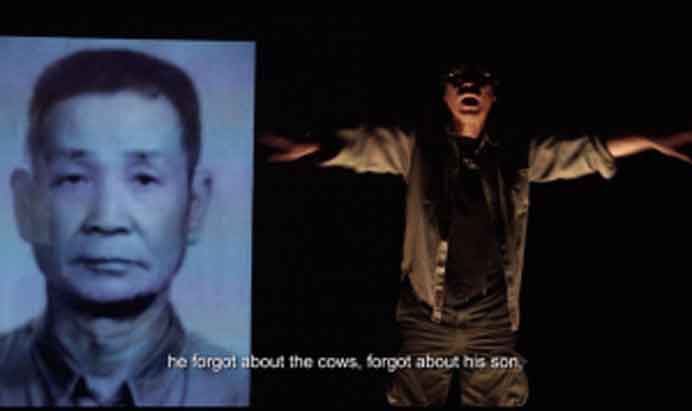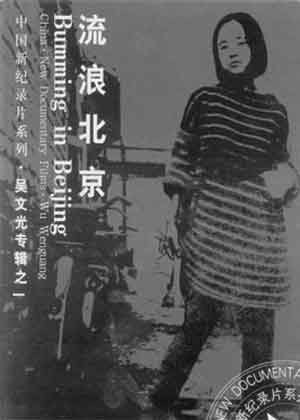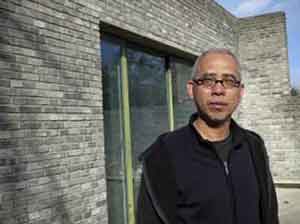| |
|
| |
|
|
1956
|
Wu Wenguang 吴文光was born on Octobre 23, in the southwest of Yunnan Province
|
| |
China.
|
| |
|
|
1974
|
After high school, he was sent to the countryside, during the Cultural Revolution.
|
| |
|
|
1978
|
He studied literature at Yunnan University and started teaching.
|
|
|
|
|
1985
|
He works as a news journalist for Kunming Television..
|
|
|
|
|
1988
|
He resigned, moved to Beijing and made his first video : Chinese People.
|
| |
|
|
1989
|
He made himself famous by producing the first independent Chinese documentary
|
| |
film : Bumming in Beijing : the Last Dreamers
|
| |
He decided to focus on five artists friends, who were illegal residents living in North-
|
| |
West of Beijing, near the Old Summer Palace, to capture the stark reality of the town,
|
| |
after the events of Tian'anmen.
|
| |
|
|
1991
|
He founded his own studio : The Wu Documentary Studio
|
| |
|
|
1993
|
His documentary When I Was a Red Guard won The Ogawa Shinsuke Price at the Yamagata
|
| |
Festival.
|
| |
|
|
1994
|
With his wife,dancer and choreographer Wen Hui, with whom he collabores as an actor,
|
| |
playwright, and video artist, he co-founded The Living Dance Studio.
|
| |
|
|
|
They produce live Art events together, combining theater, modern dance, performance,
|
| |
accompanied by new media arrangements, using
|
| |
( sound, video and computer projections ).
|
| |
|
|
1999
|
Report on Giving Birth - in collaboration with Wang Jianwei combines interviews,
|
| |
choreographed dance movements, and a range of projected images.
|
| |
|
|
2001
|
23.08 Dancing with Farm Workers Yuanyang Art Center.
|
|
|
Dancing with Farm Workers - with : Song Dong Yin Xiuzhen Wu Wenguang Wen Hui and
|
| |
thirty workers on construction sites in Beijing, migrants from Sichuan.
|
|
|
|
| |
He edited two collections of critical texts : Document ( 2000 and 2001 ) and founded
|
| |
the independent monthly Art Magazine : New Wave ( 2001 )
|
| |
|
|
2004
|
24.04 24.05 participation to ( D.I.A.F.2004 ), First International Festival of Art, Dashanzi
|
| |
Beijing.
|
| |
|
|
2005
|
Near District 798, in the suburbs of Beijing, they established a centre for their artistic
|
|
|
actiivities ( a performance space, video space, living dance studio ) for independent
|
| |
artists : The Caochangdi Work Station.
|
| |
|
|
2006
|
He participated in collectif : Villager documentary project teaching villagers how to use
|
| |
a digital camera and to make a film. |
| |
|
|
2010
|
He launched the collaborative Folk Memory Project of China’s Great Famine (1958-1961),
|
| |
featuring interviews with thousands of famine survivors, to collect their memories..
|
| |
|
| |
Danièle Sicard
|
| |
|
|
•
|
| |
|
Documentaries selection
|
|
| |
|
|
|
|
1989
|
|
Chinese People
|
First video |
| |
|
|
|
|
1990
|
|
Bumming in Beijing : The Last |
70 minutes - series of artist interviews
|
|
|
|
Dreamers |
without script - handheld cameras.
|
| |
|
|
|
|
1993
|
|
1966, My Time in the Red Guards
|
|
| |
|
|
|
|
1995
|
|
Àt Home in the World
|
|
| |
|
|
|
|
1999
|
|
Jianghu : Life on the Road |
The camera follows a troopof itinerant singers.
|
| |
|
|
|
|
2001
|
|
Dancing with Farm workers |
Digital video recording, of the 9 days process in
|
| |
|
|
which workers were trained in dance and theater
|
| |
|
|
inspired by their daily lives.
|
| |
|
|
|
|
2006
|
|
Fuck Cinema
|
analysis of World of Cinema. |
| |
|
|
|
|
2010
|
|
Treatment |
movie in memory of his mother.
|
| |
|
|
|
|
2016
|
|
Investigating My Father
|
80 min investigation of a son on his father to know
|
| |
|
|
how he went from the society before 1949 to the one |
| |
|
|
after 1949 |
| |
|
|
|
|
•
|
| |
| |
|

|
|
Investigating My Father ( Directed, edited by Wu Wenguang ) 80 min. 2016
|
| |
|

|
|
Bumming in Beijing ( dir. Wu Wenguang )
|
| |
|
•
|
|

![]()